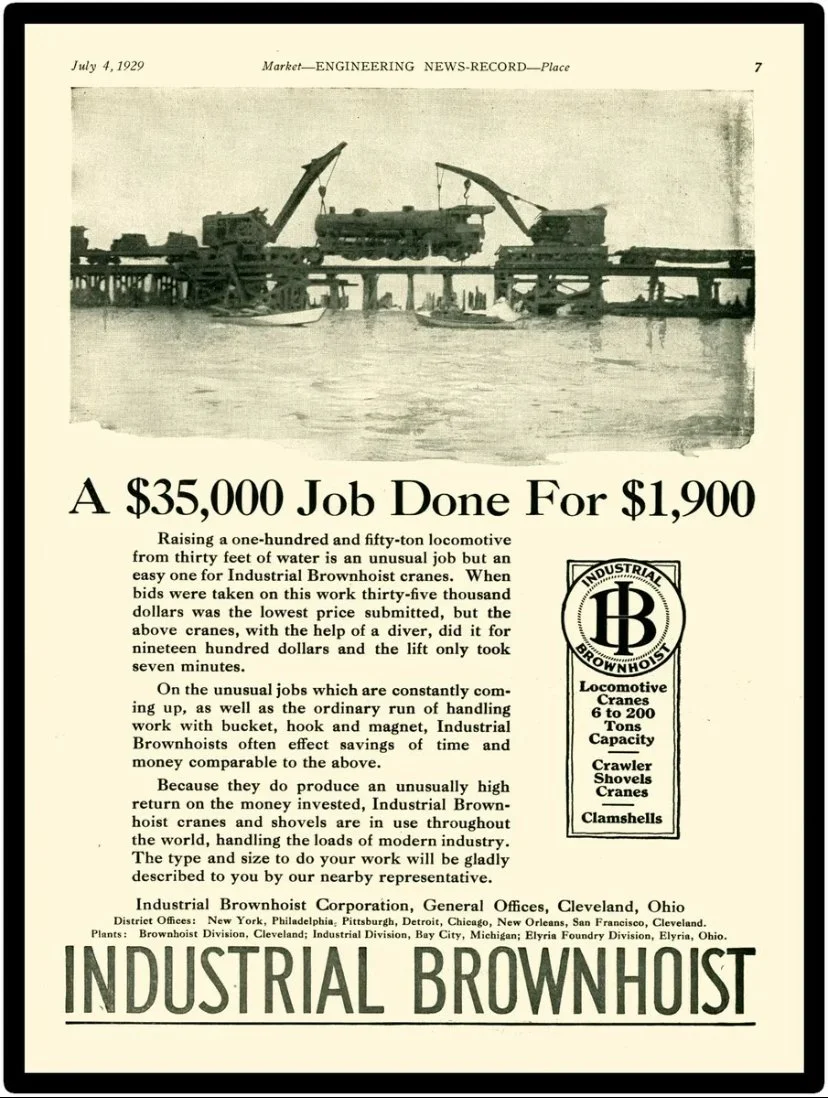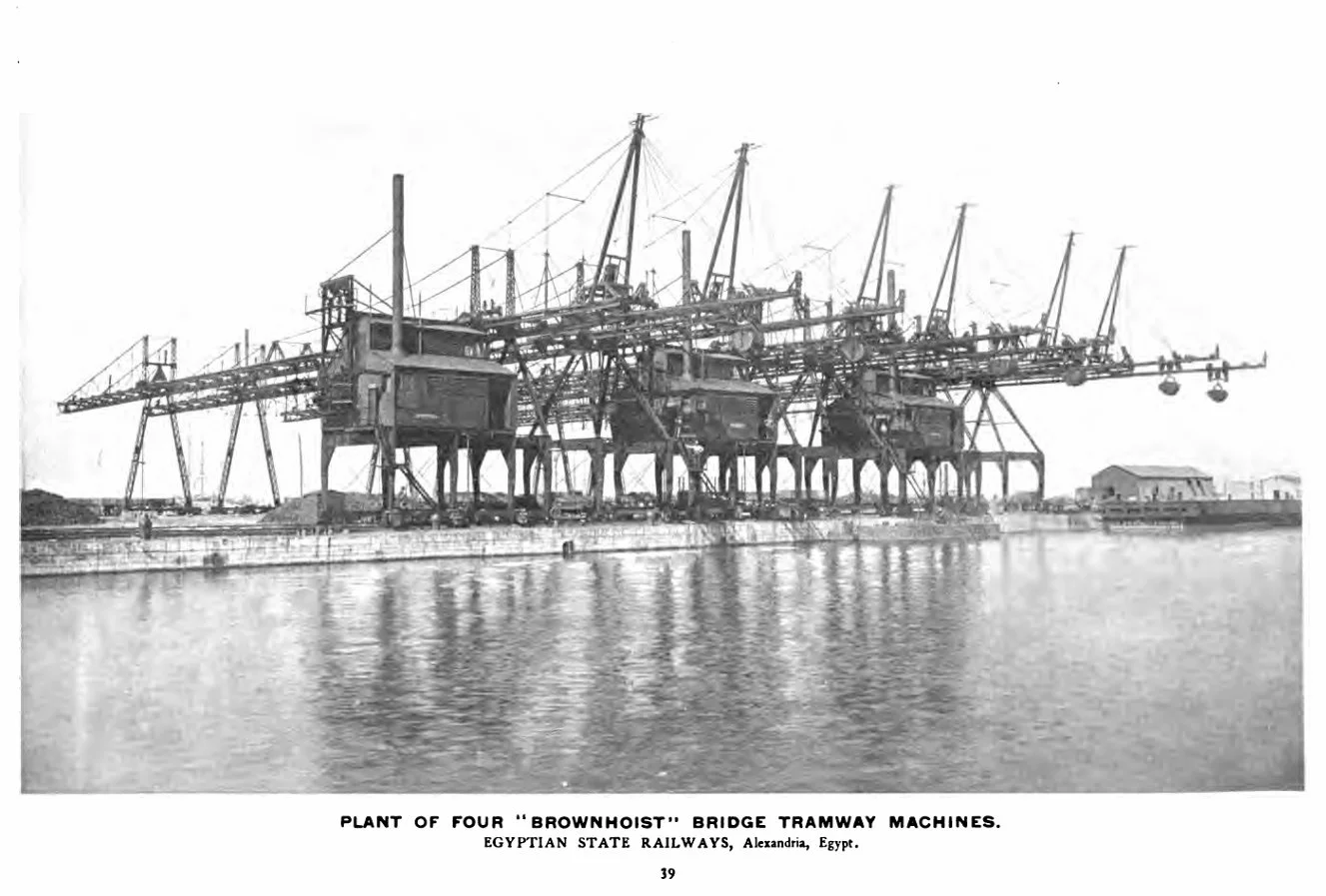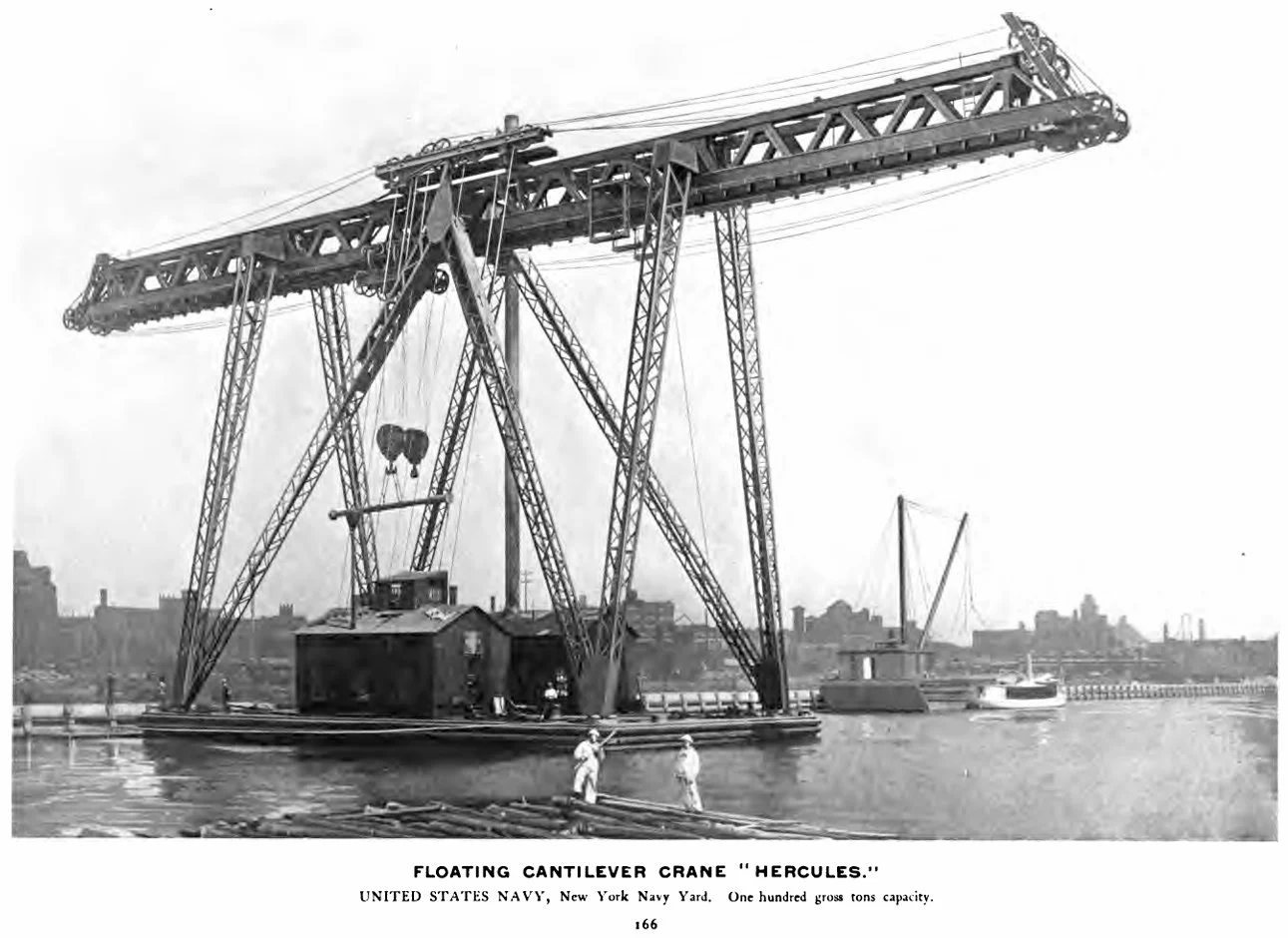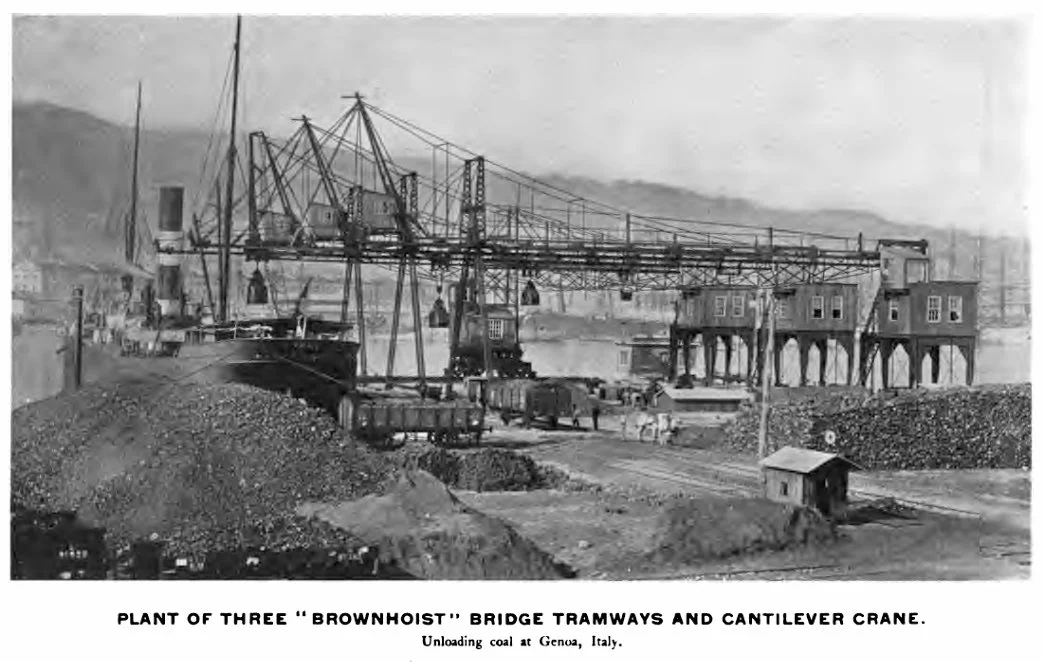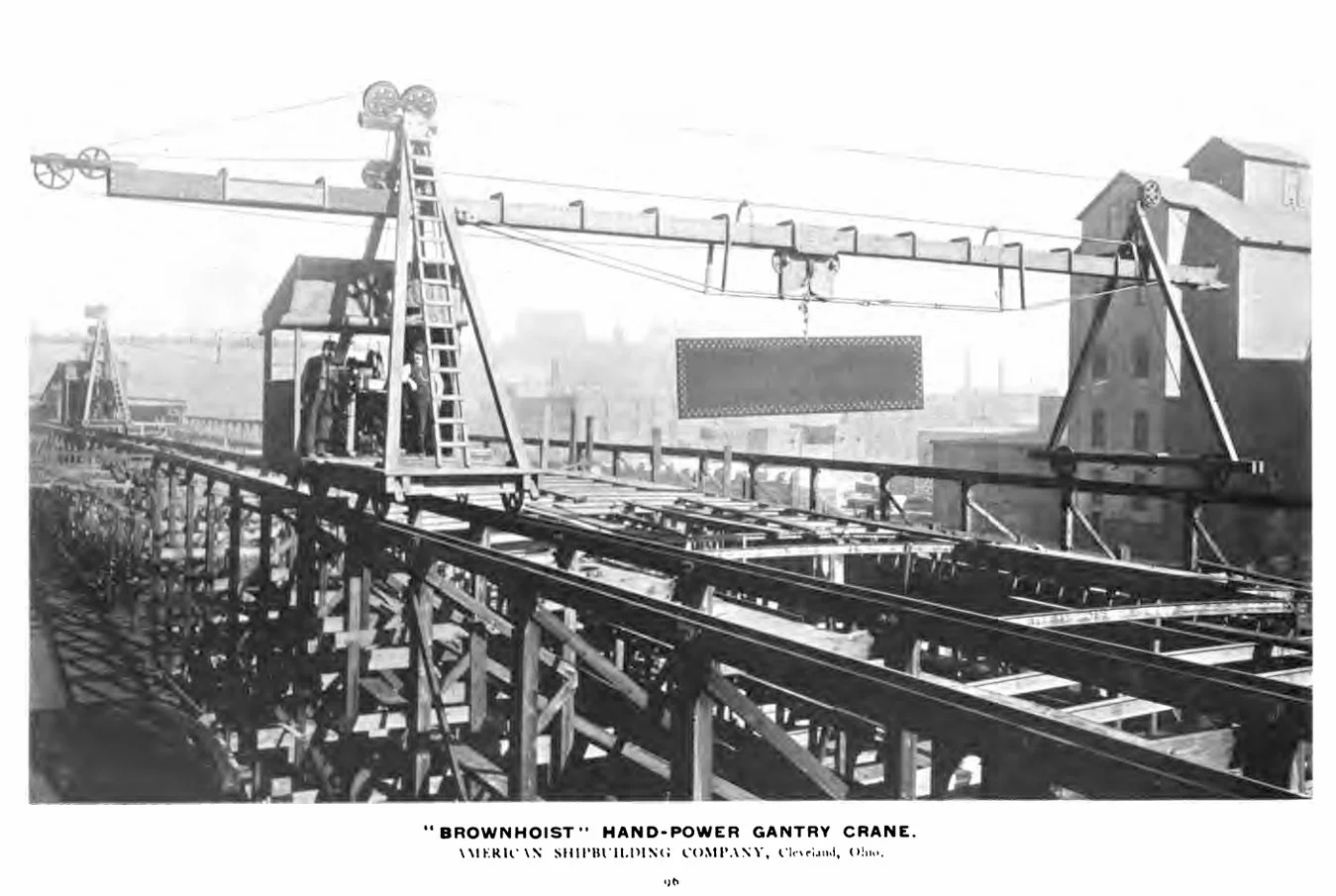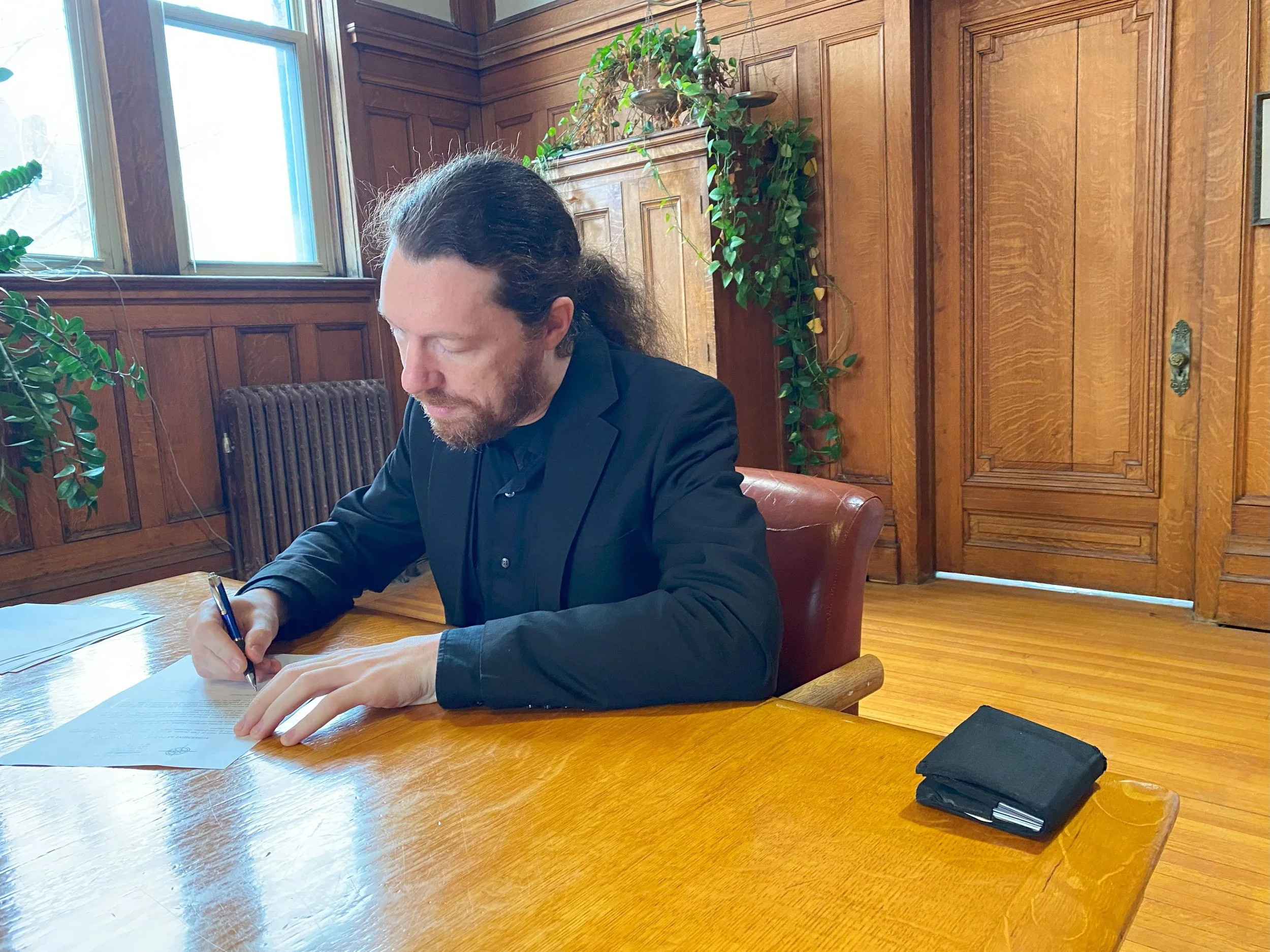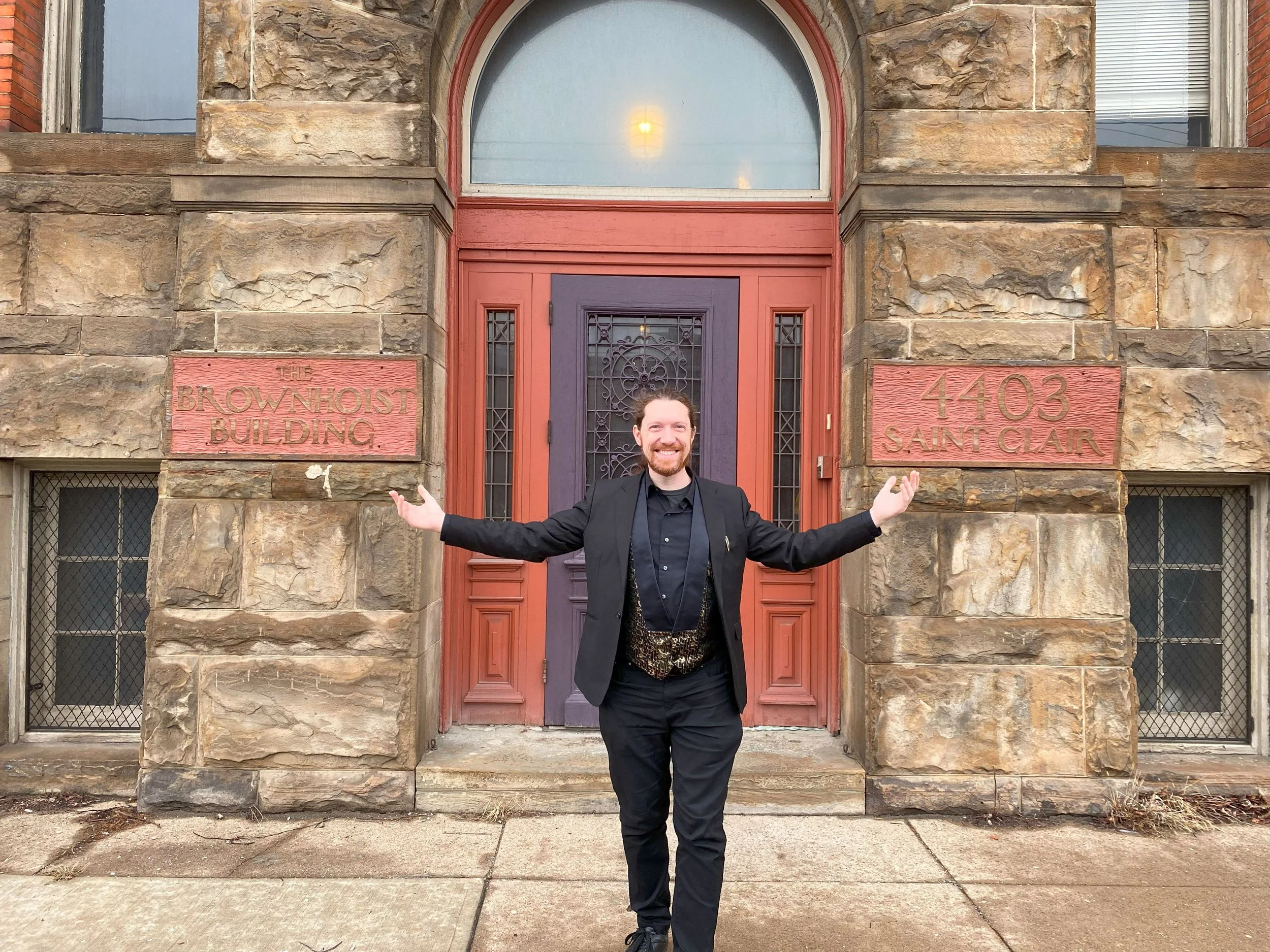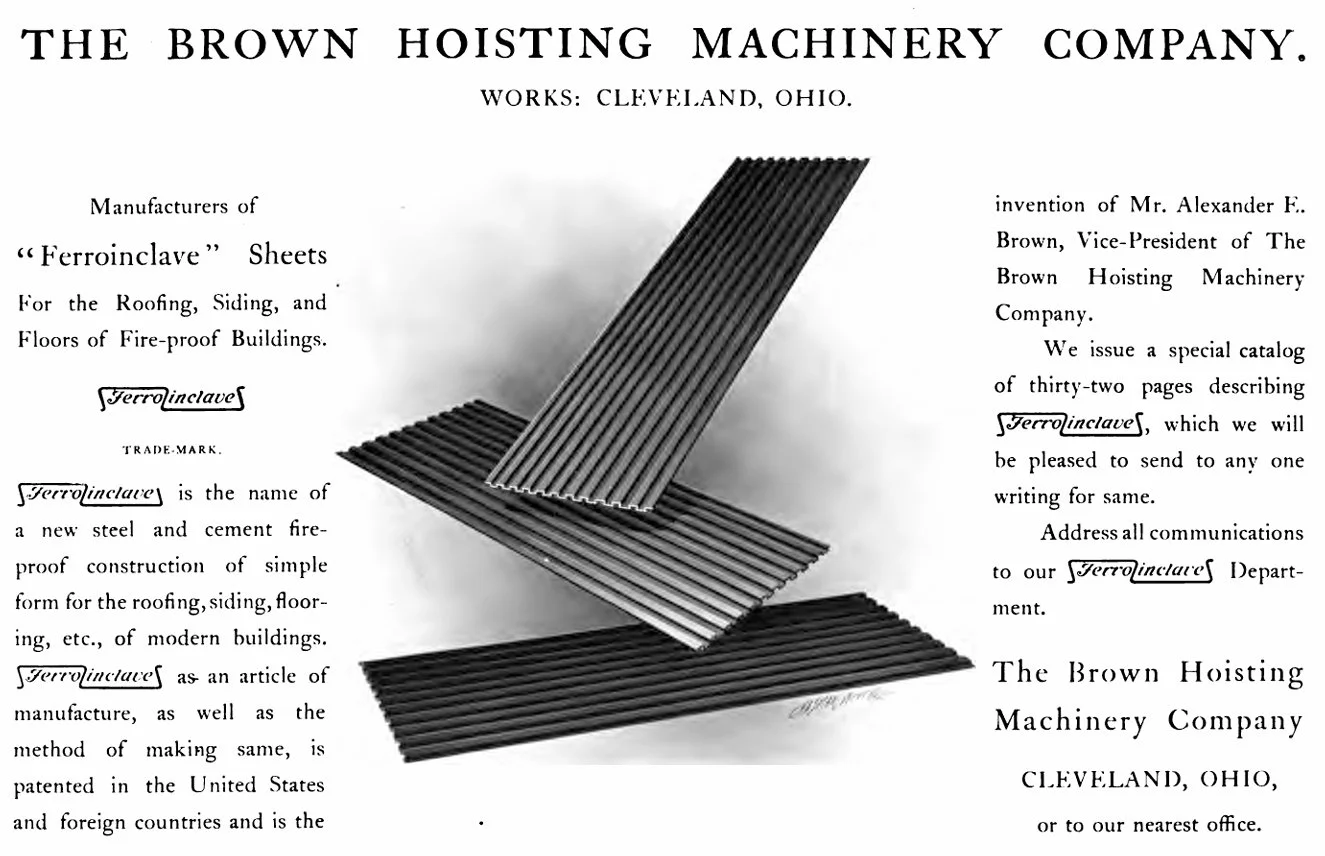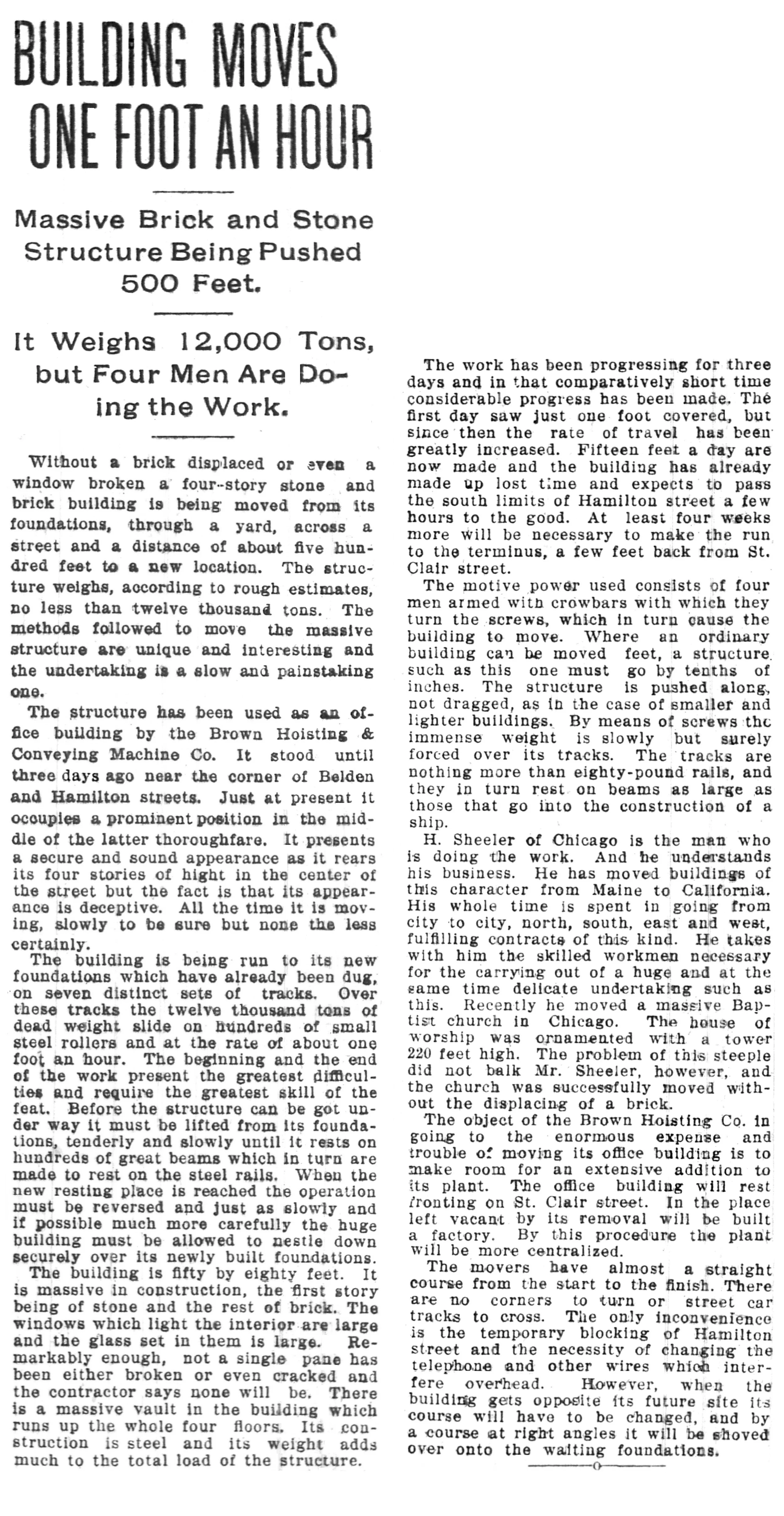Our History
Here at The Brownhoist, we are passionate about creativity, community, and our history. It is an honor to occupy a space that is part of Cleveland’s rich mosaic of historical places. Built in 1890, our building originally served as the offices for the Brownhoisting & Conveying Machine Co. Although the significance of the “Brownhoist” crane seems lost to time, the work done by this company and its engineers changed the face of industry in the Great Lakes and beyond.
Founders
The Brownhoisting Conveying and Machinery Co. was founded in 1880 by Fayette Brown (1823-1910) and his son, Alexander E. Brown (1852-1911). Fayette Brown was already deeply entrenched in the steel industry, and Alexander was becoming an accomplished engineer, who got his start in bridge building. Alexander was responsible for the invention of the “Brownhoists” that revolutionized ports around the country and world.
The Impact of Brownhoist Equipment
The Brownhoist company produced heavy equipment for moving ore, coal, gravel, and other materials that would have required countless man-hours. Such production followed the trend of safer and more efficient work sites of the early 1900s. With the introduction of workers’ compensation laws, safety became a higher priority for historically dangerous industries such as mines, railyards, and shipyards. The patented equipment became an indispensable resource for many booming industries at the turn of the century.
Thanks to Brownhoist Machinery, the ports of the Great Lakes were the most efficient in the country. As opposed to the old days of men hauling wheelbarrows and taking 5 days to unload 1,000 tons of ore, 10,000 tons of ore could be unloaded in only a few hours. This innovation fueled the booming steel industry, for example, in Cleveland and other parts of the Rust Belt.
The impact of Brownhoist machinery even extended internationally. After World War I, French ports experienced congestion due to the slow unloading of ore from Belgium and Northern France. Brownhoist engineers were called in to help and equipped the area with 60 cranes.
Brownhoist Equipment soon spread to other parts of Europe, feeding industry anywhere a crane was erected. The expansion overseas also strengthened stateside Atlantic ports, since they also needed to be outfitted with Brownhoist cranes in order to load and ship Brownhoist’s heavy machinery. Without Brownhoist Machinery and the inventive vision of Alexander E. Brown, commerce of the era would have looked much different.
Further Innovation
On December 17, 1900, a massive fire broke out, destroying all five acres of manufacturing operations in under forty-five minutes. The pine timbers that supported the shop buildings’ roofs were no match for a flaming barrel of varnish.
Upon rebuilding the massive structure, Alexander E. Brown devoted himself to developing a new kind of fireproof roof that could prevent further disaster. The previous structure included “fireproof paint” that quickly failed under immense heat.
With that came Alexander Brown’s “Ferroinclave” system of roof building, which consisted of specifically cut steel, coated in a special mix of cement. Past engineers had employed similar methods to no avail. Despite the skepticism of fellow engineers of the time, the roof of the former manufacturing plant has held up for over 100 years.
The Brownhoist’s office building that we occupy today was spared from the massive blaze. There was no reason to rebuild, so the building was relocated from Hamilton Avenue to its current home on St. Clair Avenue. It was a slow process, as the Plain Dealer reported in August 1901, “Building Moves One Foot an Hour.” Employees continued about normal business, coming and going as their office building slowly crept to its new home.
Brownhoisting and Beyond
In 1931, the company president, Alexander C. Brown, son of founder Alexander E. Brown, decided that it was in the best interest of the Brownhoisting & Conveying Machine Co.’s relocate its manufacturing operations to Bay City, Michigan.
Offices that handled administrative, sales, and accounting affairs remained in Cleveland until Columbia Electric Manufacturing Co. took over the space in the 1940s. By the 1990s, the building was home to mainly law offices until Brownhoist Partners LLC acquired the space in 2023.
From here, we aim to keep this historical space alive with the spirit of creativity and inclusion.


